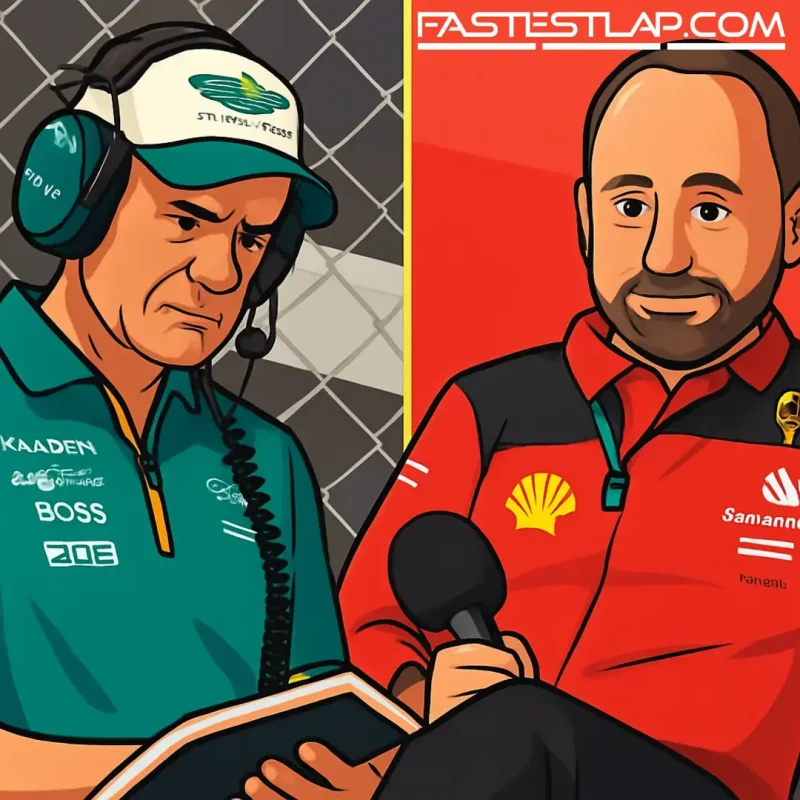Aston Martin’s power play: Newey and Cardile to co-pilot the tech reboot
Aston Martin has finally got its two heavyweight signings under the same roof. Enrico Cardile has walked through the doors at Silverstone and into a job title that matters: chief technical officer. Across the corridor? Adrian Newey, the managing technical partner with a small slice of the team and a very large say in how fast the car goes. If you were looking for the spine of Aston’s next era, this is it.
Cardile’s arrival has been a long time coming. Fifteen months after the deal was agreed with Ferrari, he’s swapped Maranello red for Aston green and moved his family to the UK. The timing is deliberate. With 2026’s regulation reset creeping closer, Lawrence Stroll’s project has stacked the upper deck: Andy Cowell is CEO and team principal after returning from a sabbatical, Mike Krack runs trackside operations, Bob Bell is executive director of the technical department, and Eric Blandin leads aero. Now Cardile joins to run the development machine, while Newey provides the north star.
The obvious question, and one Cardile tackled on day one: who does he actually report to?
“I report to both,” he said of Cowell and Newey. “One or the other, depending on the work, but both are my bosses. I’m a lucky man. It’s an amazing team, and I’m surrounded by special people.”
When you line up that many big names, the risk is “too many cooks”. Cardile doesn’t see it that way. He leaned into collaboration rather than turf wars, describing the real job as making the information flow clean and fast so work doesn’t get duplicated and performance isn’t lost.
“We have no problems in this respect,” he said. “We’re finding the best way of collaborating and blending our efforts, not working in silos. Everyone has a clear remit; people aren’t trying to do one another’s jobs. The key is integration.”
It’s a familiar tune at successful teams: the value isn’t just in the genius but in the joins. Newey’s best eras came with strong lieutenants and good interfaces—think Patrick Head at Williams, Neil Oatley at McLaren, and the Red Bull crew of Pedro Prodromou, Rob Marshall, and Pierre Waché. Aston Martin has assembled its own version of that leadership lattice. Now it has to hum.
Cardile’s brief is broad. He’s responsible for the whole development stream—from concept, aero and vehicle dynamics to the tools that validate the ideas: wind tunnel, CFD, correlation. His description of the job is predictably all-consuming and, yes, a little giddy.
“There’s absolutely no routine,” he said. “I get to be involved in discussions all week and see how various projects are maturing. It’s very exciting, highly dynamic, and I love it. I get paid for following my passion—so, as I say, lucky.”
Don’t expect to see him on the pit wall just yet. Cardile won’t travel for the remainder of the 2025 campaign, instead embedding at the new Aston Martin campus—Stroll’s big-ticket investment that now needs to justify its price tag. The plan is to be present next season, when the AMR26 comes to life and the next rulebook takes hold.
There’s a cultural note here too. Cardile talks about deliberately not being the loudest voice in the room; the specialists should be. His job is to exploit their expertise, not hand them answers. That sounds small, but in a team that has rapidly layered on senior talent, it matters. This phase is about shaping interfaces, not egos.
What does it all add up to? A reconfigured Aston Martin that’s betting hard on process and people before new regulations put everyone back on the starting blocks. The team’s form has swung in recent seasons, but the upside has always been visible. With Newey steering philosophy and Cardile driving day-to-day execution—and Cowell orchestrating above the line—the structure finally looks like it matches the ambition.
Of course, structures don’t score points; cars do. The measure will be whether this brain trust can turn the new Silverstone machinery and that “flow of information” into lap time without the missteps that burned hours and budget in past years. The ingredients are elite. The chemistry is the story.
Cardile, for his part, is bringing fresh eyes without pretending to reinvent the wheel. “Every time a new person joins, they bring a different way of doing things,” he said. “It’s down to the organisation to understand those and pull out the ones that can improve the way we’re working. The team is always enriched by it.”
It’s a careful kind of confidence—no headlines about revolutions, just a promise to make very good people work even better together. With 2026 looming, that might be exactly what Aston Martin needs.




